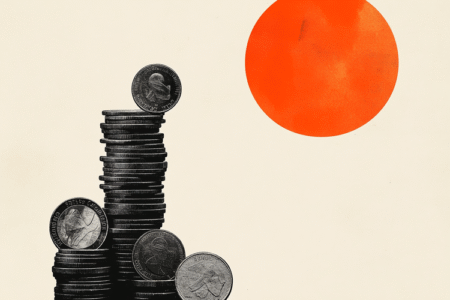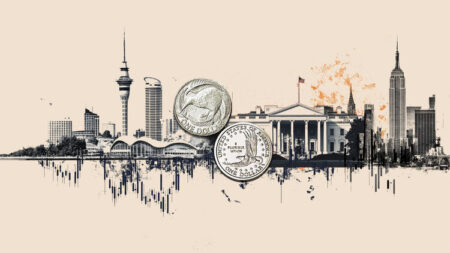- The Indian Rupee recovers after two days of losses, tracking a weaker US Dollar Index.
- Fresh trade data and easing wholesale inflation support INR sentiment.
- India’s benchmark Nifty 50 and Sensex indices bounce back strongly.
- RBI intervention expectations anchor the Rupee despite Middle East hostilities.
The Indian Rupee (INR) strengthens against the US Dollar (USD) on Monday, halting a two-day losing streak as the US Dollar Index (DXY) slips lower and fresh trade data boosts sentiment. A narrower trade gap has offered the Rupee some support, helping it recover alongside a softer Greenback and steady risk appetite in global markets.
The USD/INR pair extends its intraday decline to trade around 86.07 ahead of the American session, slipping nearly 0.25% from the day’s high of 86.36. A weaker Greenback, improved domestic trade data, and softer global crude oil prices following Friday’s rally are lending support to the Rupee, although traders remain cautious ahead of key US economic releases this week.
While the ongoing Iran–Israel conflict has so far had limited direct impact on India, policymakers remain vigilant to any potential fallout, given the region’s importance for India’s energy security. New Delhi has maintained a neutral diplomatic stance, urging de-escalation while actively monitoring supply routes to ensure adequate Crude reserves.
This measured approach, along with the Reserve Bank of India’s (RBI) readiness to curb excess currency volatility, has helped cushion the Rupee from sharper swings, although a sudden flare-up could still push Oil prices higher and rekindle inflationary pressure.
- India’s trade deficit stood at $21.88 billion in May 2025, little changed from $23.8 billion a year ago, highlighting steady trade flows compared to fluctuations seen in other Asian economies. Imports dipped by 1.7% to $60.61 billion, helped by softer energy prices, while exports slipped 2.2% to $38.73 billion. Notably, shipments to the United States rose to $17.25 billion since April, up from $14.17 billion a year earlier, suggesting that recent US tariff moves have had a limited impact on India’s trade.
- India’s wholesale price inflation cooled to 0.39% in May 2025, marking its lowest level since March 2024 and coming in below market expectations for a slight decline to 0.80%. Softer food prices, especially a sharp drop in vegetable costs, helped ease headline inflation. Manufacturing price growth also slowed, reflecting milder cost increases for items like paper, food products, and plastics. Meanwhile, fuel and power prices continued to fall, led by lower petrol and diesel rates. On a monthly basis, wholesale prices dipped slightly by 0.06%, extending April’s modest decline.
- The Reserve Bank of India has signalled its willingness to smooth out excessive Rupee volatility through intervention if required. This backstop continues to support the currency, even as traders keep an eye on global risk trends.
- India’s benchmark indices also rebounded on Monday, breaking a two-day losing streak. The NSE Nifty 50 jumped 227.90 points, or 0.92%, to close at 24,946.50, while the BSE Sensex added 677.55 points, or 0.84%, finishing at 81,796.15.
- Safe-haven flows supported the US Dollar as tensions between Israel and Iran intensified, raising concerns over potential disruptions to oil shipments through the Strait of Hormuz. While Crude prices ticked higher on geopolitical worries, the US Dollar’s near-term strength was balanced by uncertainty around US trade policy and upcoming central bank meetings.
- May’s Consumer Price Index showed a modest 0.1% increase MoM and a 2.4% rise YoY, a slightly softer outcome than forecasts and reflecting muted underlying price pressure despite tariffs. This reading reinforced expectations that the Federal Reserve (Fed) would maintain its policy rate at the June meeting rather than move immediately toward easing.
- Traders are turning their attention to the Fed’s midweek meeting, where policymakers are widely expected to hold rates steady. Market players will parse the updated economic projections and Fed Chairman Powell’s remarks for hints on when rate cuts might begin.
Technical analysis: USD/INR tests triangle breakout, but momentum fades
The USD/INR pair has recently broken out of a multi-week symmetrical triangle pattern on the 4-hour chart, signaling a potential shift in short-term bias. However, after reaching near 86.50, prices are struggling to sustain momentum above the upper trendline. The pair is currently hovering near 86.07, modestly above the 21-period Exponential Moving Average (EMA) at 85.97, suggesting that buyers still have a slight advantage as long as prices hold above this moving average support.
The 14-period Relative Strength Index (RSI) stands around 59, indicating mild bullish momentum but not yet in overbought territory. A sustained move above the recent high near 86.50 could confirm a stronger bullish breakout, potentially exposing the psychological 87.00 level. On the flip side, a drop back below the EMA and a retest of the former triangle resistance-turned-support near 85.90–85.80 could attract fresh selling, dragging the pair toward the lower ascending trendline near 85.50.
Economic Indicator
WPI Inflation
The WPI Inflation released by the Ministry of Commerce and Industry is a measure of price movements similar to the Consumer Price Indices (CPI). Generally, a high reading is seen as positive (or bullish) for the Rupee, while a low reading is seen as negative (or bearish).
Read more.
Read the full article here
















